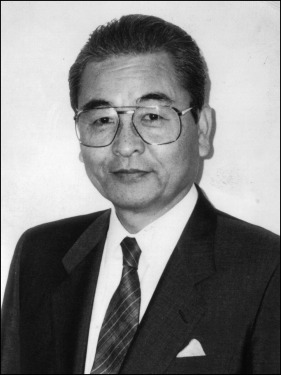
Tadao Nakago died of bladder cancer on February 12, 2016, just 2 days before his 83rd birthday. He was born on February 14, 1933, in Sanda, north of the Rokko Mountains in Kobe, Japan. He graduated from Osaka University Dental School in 1957 and became a dentist. He chose orthodontics as his specialty and earned a PhD degree from Osaka University in 1965. His academic interest in the early phase of his career was the cephalometric assessment of craniofacial development in the Japanese population to qualify desirable tooth movement. He became a founding professor of orthodontics at Matsumoto Dental College in 1972. He moved to Okayama University in 1980 as a founding director of the dental school-affiliated hospital and served as president of the hospital until 1988. In 1982, he successfully moved the government of Japan to include, for the first time, orthodontic treatment for craniofacial anomalies, such as cleft palate, on the list for national health insurance reimbursement. He served as dean of the dental school from 1992 to 1994. He survived a bitter administrative storm at Okayama University in 1996 and restored its honor at the law court in 2002.
He loved to educate young people and tried to disseminate practical thinking about the standards of orthodontic treatment and care. He translated Graber’s Textbook of Orthodontics into Japanese, and it became a best-seller. He liked to organize laboratory studies to explain the mechanism of tooth movement. He designed a device to apply cyclic mechanical stretching to cultured cells in a Petri dish. The cell-stretching machine was manufactured in 1983 at the workshop affiliated with the Faculty of Engineering of Okayama University. This unique original device preceded commercially available apparatuses and contributed to new knowledge in other fields of medicine. His last work was focused on the threshold of hydraulic pressure to induce cellular response in periodontal ligament fibroblasts. The threshold value was consistent with the force needed to move teeth in a clinical orthodontic setting. The work was continued by his daughter, an orthodontist, in collaboration with her husband, an ophthalmologist.
Dr Nakago’s funeral was held on his 83rd birthday, with family and friends present at the Buddhist temple where his wife’s father had served as a priest.
Stay updated, free dental videos. Join our Telegram channel

VIDEdental - Online dental courses


